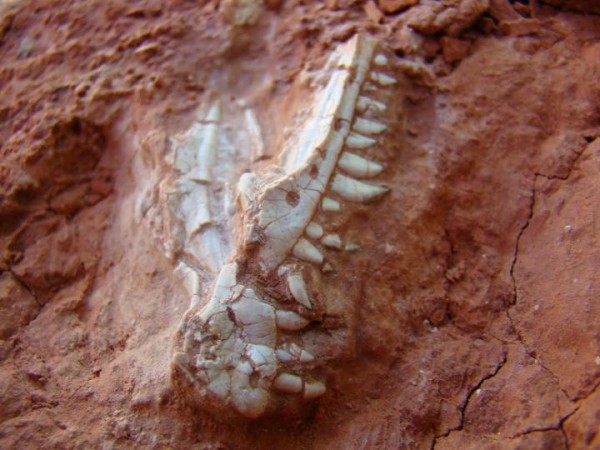By Ana Verayo, | November 11, 2016

This photograph shows the skull of Buriolestes. (Cabreira et al./EurekAlert)
Paleontologists have discovered new dinosaur fossils beside earlier dinosaur species, suggesting that lagerpetids shared their habitats and coexisted with their dinosaur ancestors, revealing a slow and steady rise of dinosaurs.
The rock layer where the dinosaur remains were found is estimated to be 230 million years old. However, the fossils originate from the earliest periods of the Late Triassic. Scientists found the dinosaur fossils in Brazil's Santa Maria Formation. The find included two new species known as the Buriolestes schultzi and the lagerpetid Ixalerpeton polesinensis.
Like Us on Facebook
In the new study, scientists said these new species provides a better understanding of the evolutionary development of the first dinosaur families. This also reveals how dinosaurs became more diverse and their rise to domination in their ecosystems was in a slow and steady process.
Past studies revealed that the closest dinosaur relatives were the first ones to go extinct. However this new fossilized evidence debunks these past findings.
According to the author of the study, Max Langer of the University of Sao Paolo, this is direct evidence that dinosaurs and their dinosaur ancestors used to live together at the same time, which means that the rise of dinosaurs was a slow and steady, and there was not sudden domination over other animals during that time.
Scientists noted that the fossilized specimens are preserved well in almost pristine conditions that offer a new understanding, detailing the anatomy of the very first dinosaurs.
The new findings about the anatomical features of dinosaur ancestors also provide clues about their behavior in their environment.
For example, the Buriolestes schultzi teeth fossils suggest that the species were on a steady diet of small animals and were not herbivorous. This early dinosaur also appeared like a therapod and scientists believe that it is one of the earliest family members of the suborder Sauropodomorpha, which are the ancestors of long-necked dinosaurs or sauropods.
This new study is published in the journal, Current Biology.
-
Use of Coronavirus Pandemic Drones Raises Privacy Concerns: Drones Spread Fear, Local Officials Say

-
Coronavirus Hampers The Delivery Of Lockheed Martin F-35 Stealth Fighters For 2020

-
Instagram Speeds Up Plans to Add Account Memorialization Feature Due to COVID-19 Deaths

-
NASA: Perseverance Plans to Bring 'Mars Rock' to Earth in 2031

-
600 Dead And 3,000 In The Hospital as Iranians Believed Drinking High-Concentrations of Alcohol Can Cure The Coronavirus

-
600 Dead And 3,000 In The Hospital as Iranians Believed Drinking High-Concentrations of Alcohol Can Cure The Coronavirus

-
COVID-19: Doctors, Nurses Use Virtual Reality to Learn New Skills in Treating Coronavirus Patients







